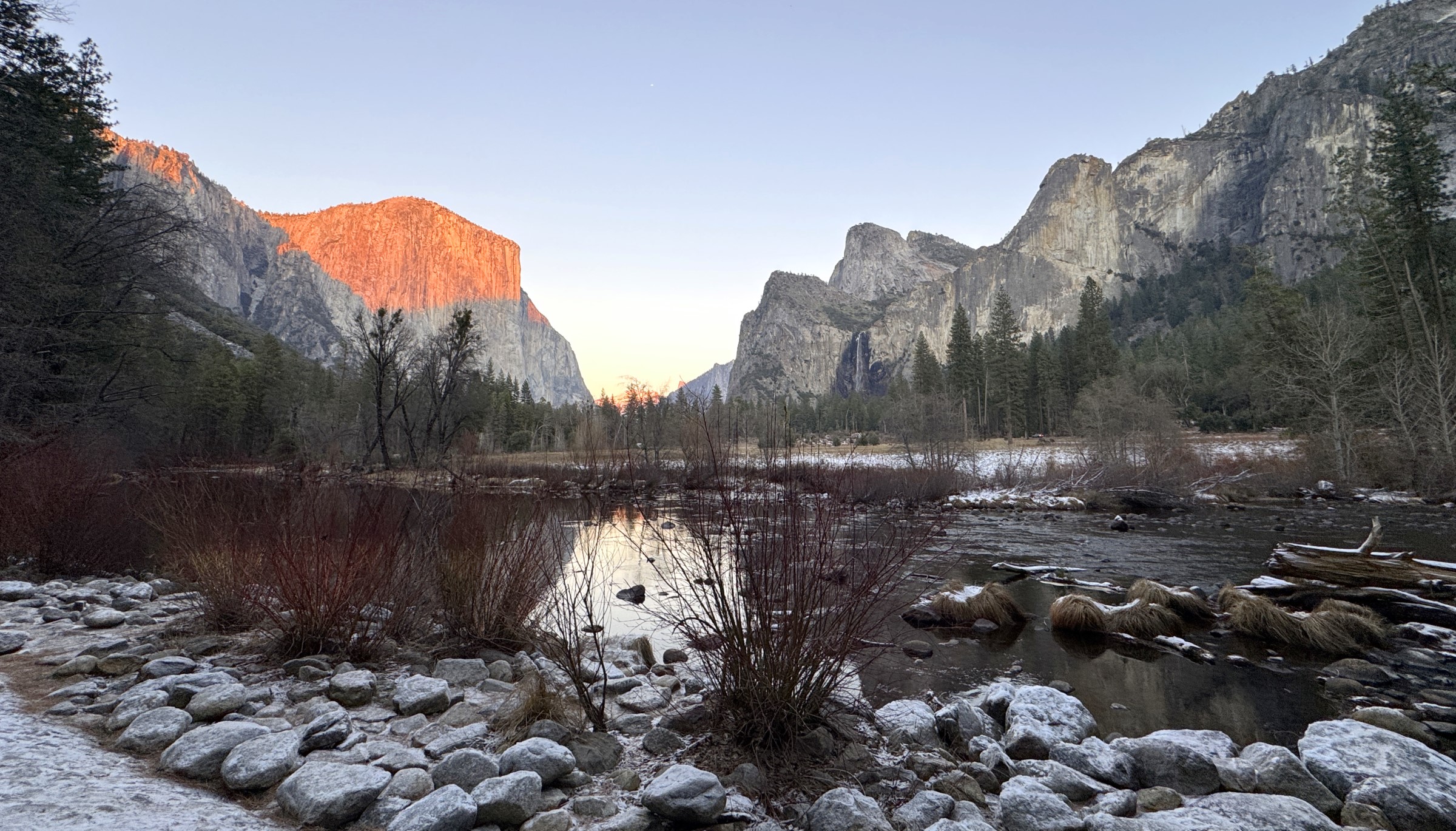
Our daughter Jessica has been the inspiration for my wife Sheri and me to embark on many hiking trips together. She was the motivator who got us up, out, and moving. We had such a great time on our Ten Falls hike in Oregon a couple of months earlier that we decided to stay in California for our next adventure—this time exploring two of the greatest national parks in the world: Yosemite and Sequoia.
Actor Kevin Costner had previously explored the history and beauty of Yellowstone National Park in a documentary, and he recently ventured to Yosemite to expand on his successful docuseries with Yellowstone to Yosemite with Kevin Costner. In his promotion of Yosemite, he mentions driving through a tunnel and gazing upon “probably the most beautiful place on earth.”
Yosemite National Park
We drove our H2 Hummer to a pre-booked Airbnb located just outside Yosemite National Park. The house sat in a quaint and quiet mountain area, and one of its highlights was a private outdoor jacuzzi. I’ve learned over the course of our hiking adventures that recovery is just as important as preparation. On our Ten Falls trip, the hot springs we visited after the long hike were essential. They helped loosen our muscles and restore our energy for the next day’s physical exertion.
It was getting late in the day as we settled in. Jessica had planned to go ice skating nearby, so we gathered our things and headed out. Our son Jonathan, who is working toward his PhD at Santa Cruz University, was planning to join us later that evening.
The road to the ice rink was narrow and winding, weaving through the icy mountain terrain. I had to drive carefully to avoid slipping on black ice. Eventually, we came to a tunnel, and on the other side was a scenic overlook with a parking area. I pulled over to check out the view—and that’s when it hit me. I was looking straight down the valley at the heart of Yosemite.
Unknowingly, I had stumbled upon the exact spot Kevin Costner had described. Before us stood El Capitan and Half Dome, bathed in the warm glow of late afternoon light. The colors, the shadows, the sheer scale—it was breathtaking. I hadn’t realized Jessica’s ice skating plans had brought us right into the heart of Yosemite itself.
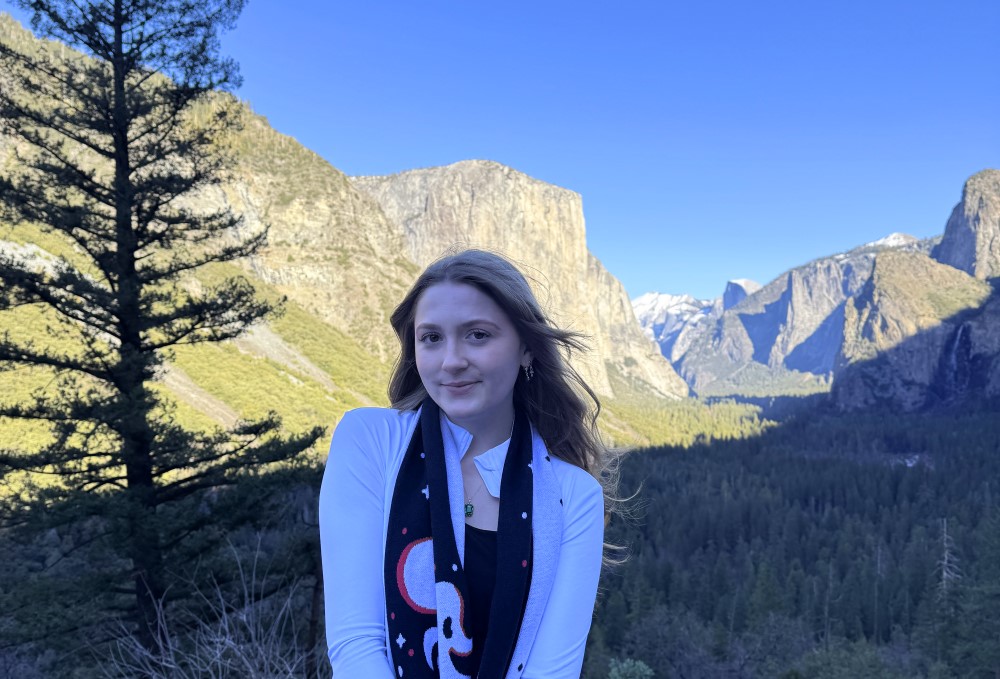
We proceeded toward Half Dome, as that was where the skating rink was located. As we pulled into the parking area, I couldn’t help but admire how striking Half Dome looked in the fading light. I parked and walked back to a spot that revealed the sheer granite walls of this natural monument. The setting sun cast dramatic shadows across its face.
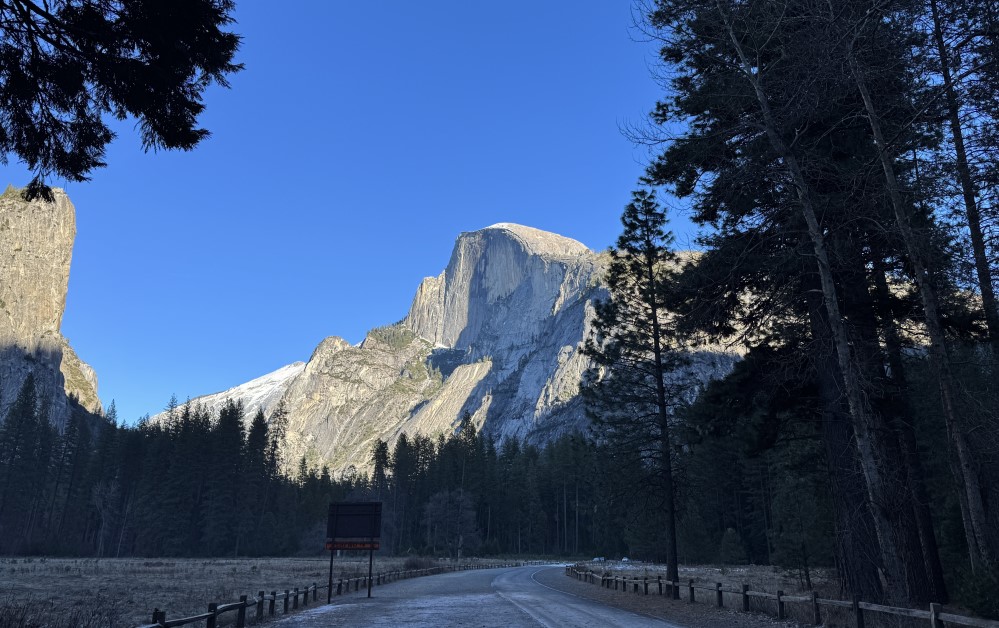
The skating area is nestled beneath towering cliffs, and there’s a fire pit where visitors can sit and enjoy the scenery while watching the skaters glide by. Since 1928, visitors have enjoyed the Curry Village Ice Rink (SV), a seasonal gem in the heart of Yosemite.
After skating, we returned via the opposite side of the river, which offered stunning pullouts where you can gaze at El Capitan and Half Dome. As the sun dipped below the horizon, warm orange tones washed across the valley. The interplay of light and shadows created a depth I hadn’t experienced on previous visits.
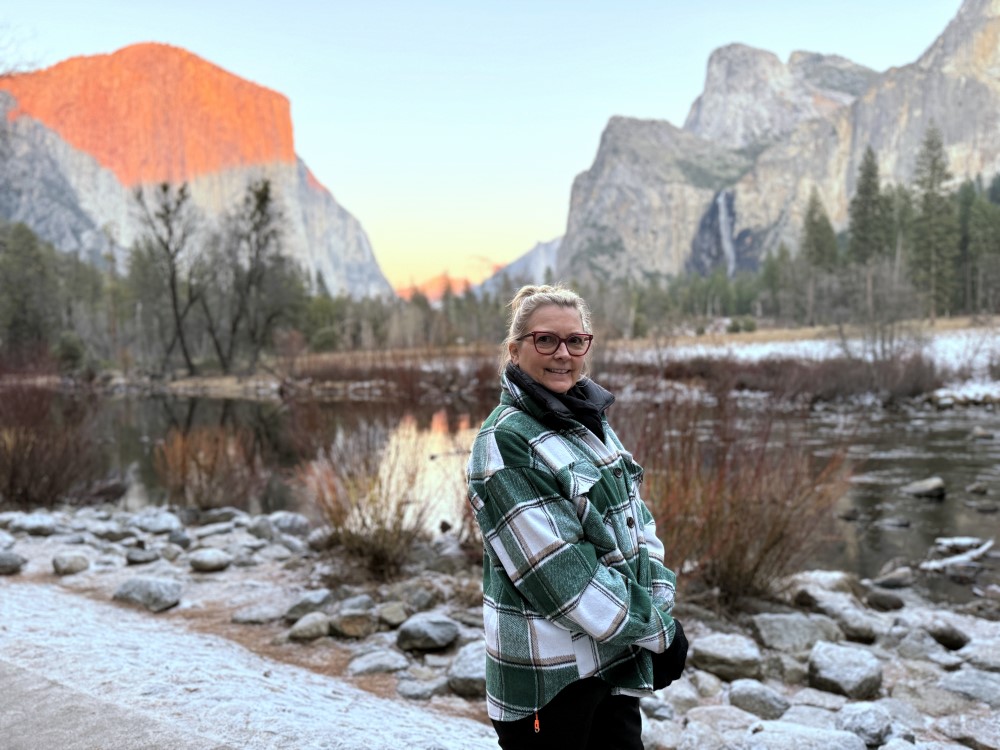
That evening, we returned to our Airbnb with plans to tackle one of our most challenging hikes yet: the Mariposa Grove of Giant Sequoias.
The Mariposa Trail is typically a 6-mile round trip hike, beginning from a parking lot near the Grove Arrival Area. Usually, you can drive up to the trailhead, but on this occasion, the 2-mile access road to the upper lot was closed. We had to make the uphill trek on foot, adding 4 miles to the hike. We opted to walk the paved road rather than take the looped nature trail accessible at the end of the parking area.
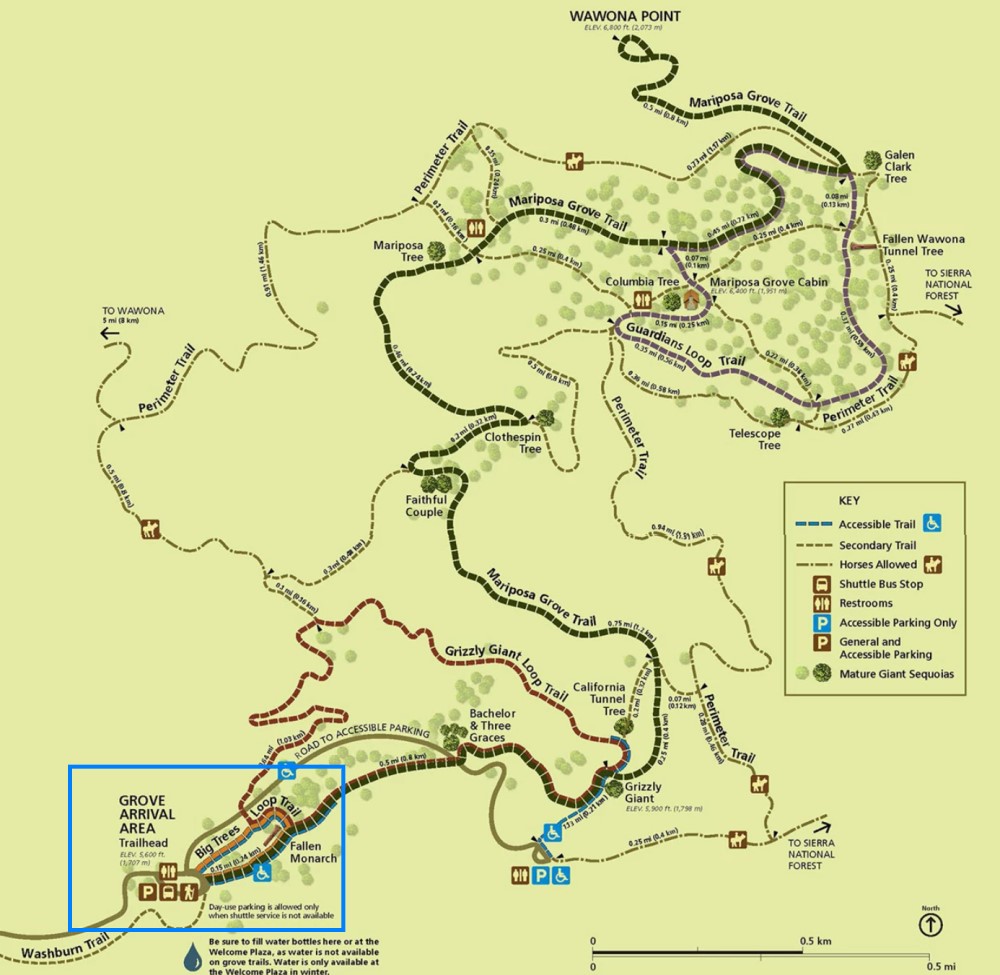
By the time we reached the trailhead, Jessica already had a blister on her foot—but she pushed on anyway. The beginning of the Mariposa Trail winds through some of the largest sequoias in the grove, including the legendary Grizzly Giant.

The next four miles led us to Wawona Point, a scenic summit with sweeping views of the valley below. People have lived in the Yosemite region for as long as 8,000 to 10,000 years. The Miwok Indians, the original inhabitants of this area, referred to the summit as Wawona, which roughly translates to “a good place to stop.” In winter, the trails can be snowy and icy, adding to the difficulty.
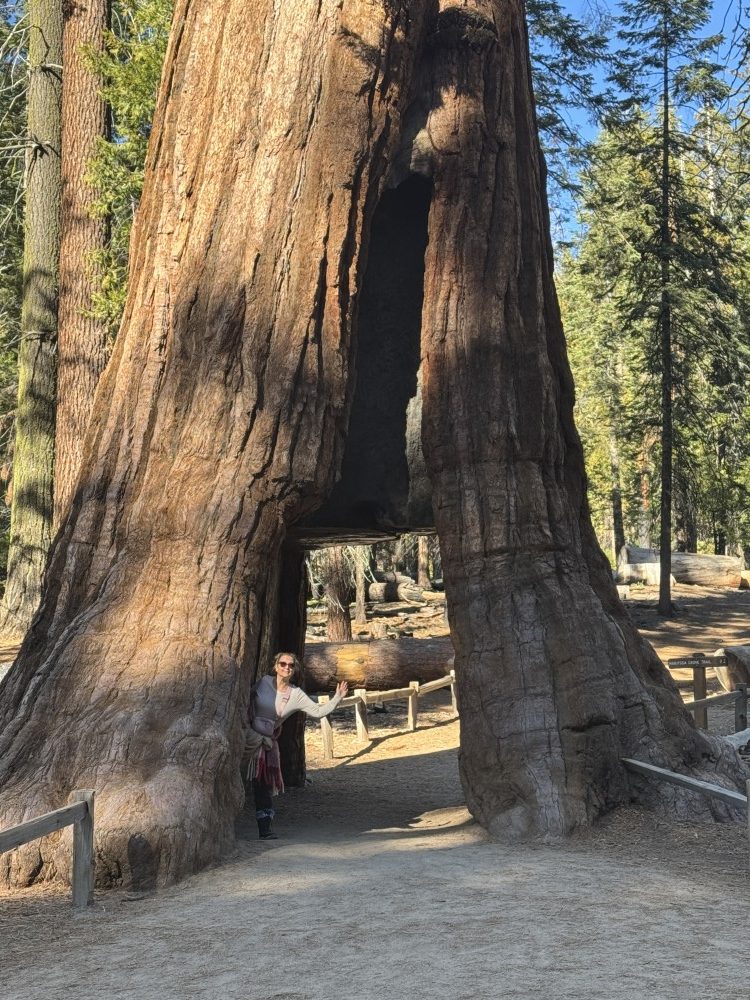
The 12-mile round trip turned out to be one of the hardest hikes I’ve done. The descent was surprisingly more difficult than the climb—engaging different muscle groups while countering gravity. It’s essential to wear proper footwear with solid toe protection and cushioning. And don’t forget to bring plenty of water and bear spray.
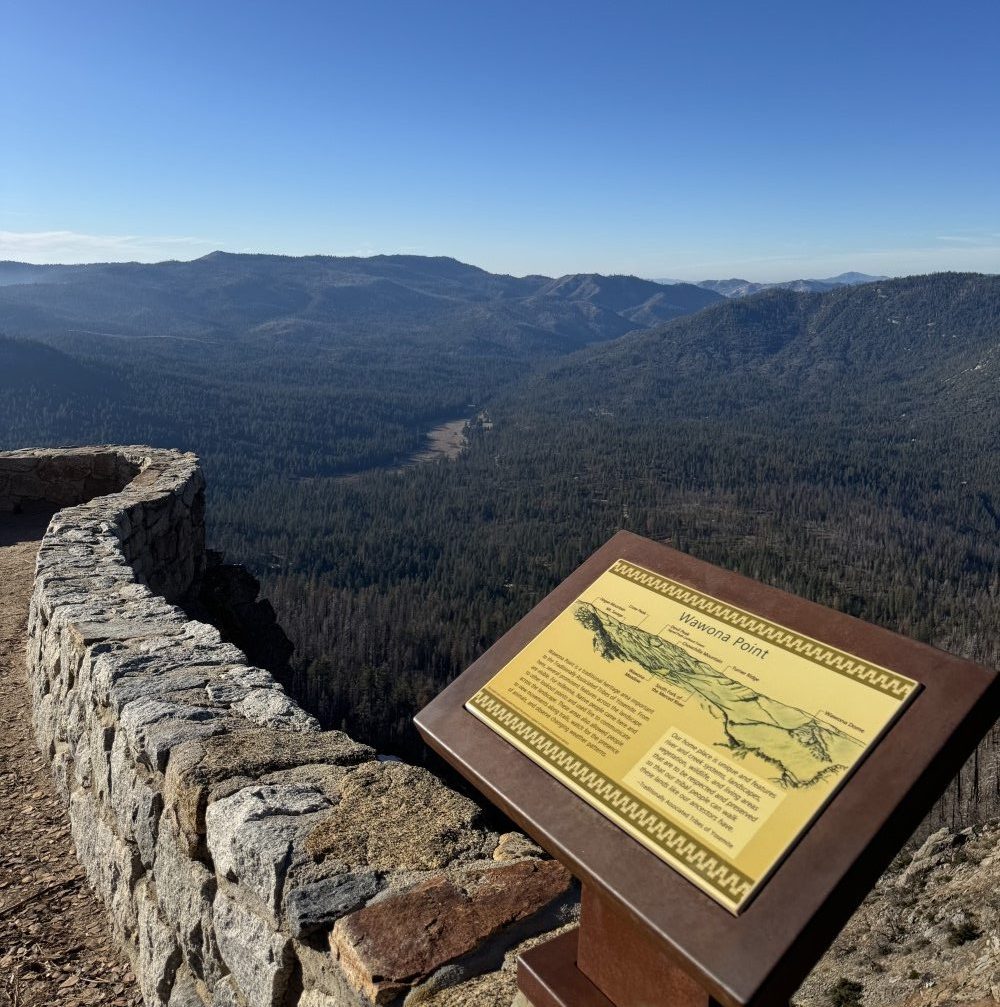
After the first half-mile of the Mariposa Trail, you’re essentially on your own. It’s important to allow enough time so you’re not still hiking after sunset. We barely made it back to the parking lot in time. Had any of us experienced a cramp or injury, we would’ve found ourselves in a precarious situation in the wilderness.
Still, the hike was a fantastic introduction to the towering, ancient sequoias we would encounter in even greater numbers during our next day’s adventure to Sequoia National Park.
Sequoia National Park
This was my second trip to the land of the giant sequoias. These awe-inspiring trees can grow over 300 feet tall and have trunks more than 30 feet wide. Many are over 2,000 years old, making them some of the oldest living organisms on Earth. Five of the ten largest trees in the world are located here-including the famous General Sherman Tree, which holds the record for the largest tree by volume. It stands about 275 feet tall and is estimated to be more than 2,200 years old.
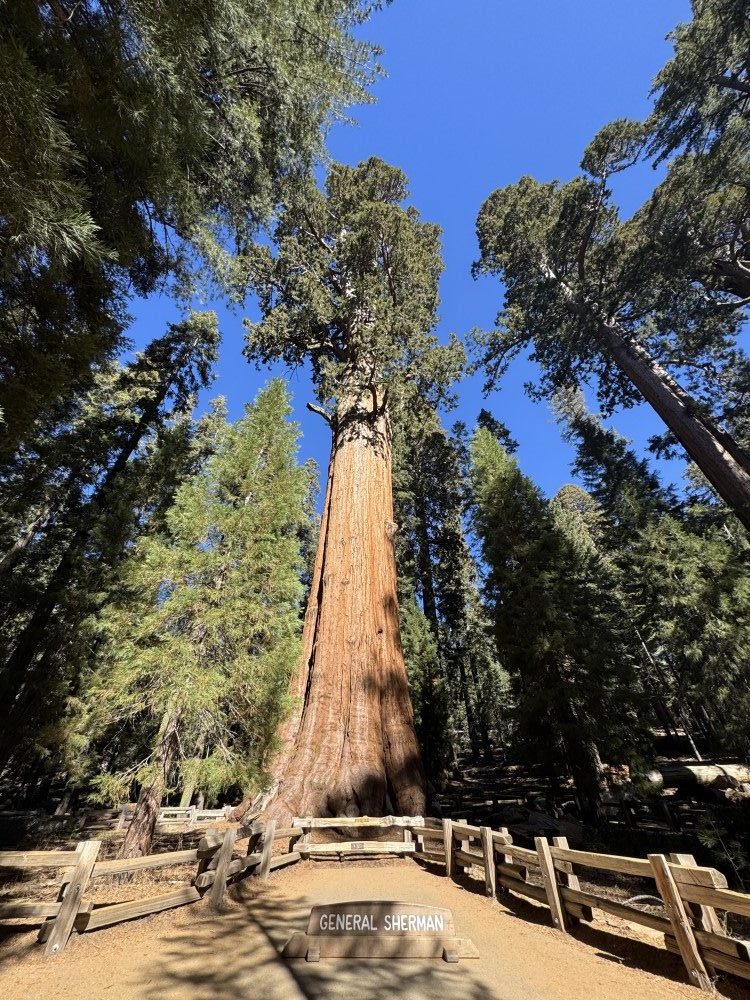
While sequoia wood itself isn’t fire-resistant, the tree’s bark—sometimes up to two feet thick—is highly fire-adapted. This natural armor is one reason these ancient giants have endured for millennia. Their immense scale is almost impossible to capture in photos. Surprisingly, their cones are quite small—much smaller than those of a typical pine.
The Congress Trail (a 3-mile loop that begins and ends at the Sherman Tree parking lot) you see many that famous sequoia woods have to offer. It is an easy looped trail that has a well-covered canopy which passes many of the named giant sequoias in the Giant Forest:
General Sherman Tree – Recognized as the largest tree on Earth by volume, this towering giant is the undisputed monarch of the Giant Forest.
President Tree – Believed to be the oldest known sequoia, this ancient sentinel has stood for over 3,000 years and ranks among the three biggest trees on the planet.
Chief Sequoyah Tree – This monumental sequoia, among the top ten in size within the Giant Forest, honors the Cherokee scholar who developed the written Cherokee language.
The Senate Group – A stately gathering of massive sequoias, their name evokes the authority and dignity of the U.S. Senate chambers.
The House Group – These towering trees form a companion grove to the Senate Group, named in tribute to the U.S. House of Representatives.
McKinley Tree – Named for President William McKinley, this majestic tree rises over 240 feet and stands as a leafy tribute to the 25th U.S. president.
Lincoln Tree – Situated off the Alta Trail, this colossal sequoia is the second-largest in the park and is sometimes said to bear the rugged facial outline of Abraham Lincoln in its bark.
Stagg Tree – Hidden deeper within the forest, this awe-inspiring giant ranks among the largest sequoias in existence and is part of the wider trail network that includes General Sherman.

The Congress Trail is a fantastic hike for people of all ages. It’s an easy, well-maintained path that offers some of the best close-up encounters with giant sequoias.
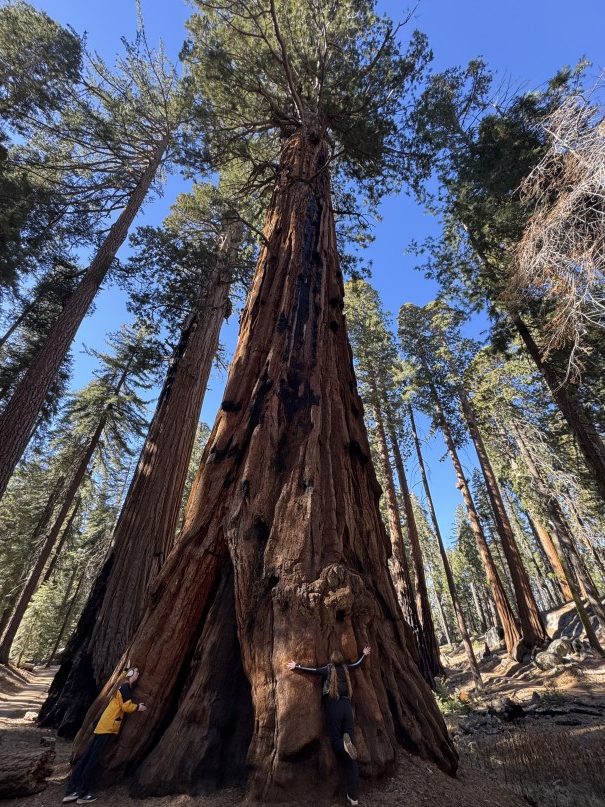
When you walk up to a sequoia and tap its bark, it resonates like a drum. You’ll notice many of the trees are hollowed out at their bases, further revealing their resilience and age.
As we drove toward Sequoia National Park, we spotted an imposing granite dome rising above the trees—Moro Rock. Its silhouette was reminiscent of Half Dome in Yosemite. With time still on our side, we decided to make the 2-mile walk to the rock.
Moro Rock is a dramatic granite outcrop in the Sierra Nevada, perched at 6,725 feet above sea level. It offers one of the most iconic panoramic views in the park. Jessica mentioned that we would be climbing it via the historic Stone Staircase to the Summit.
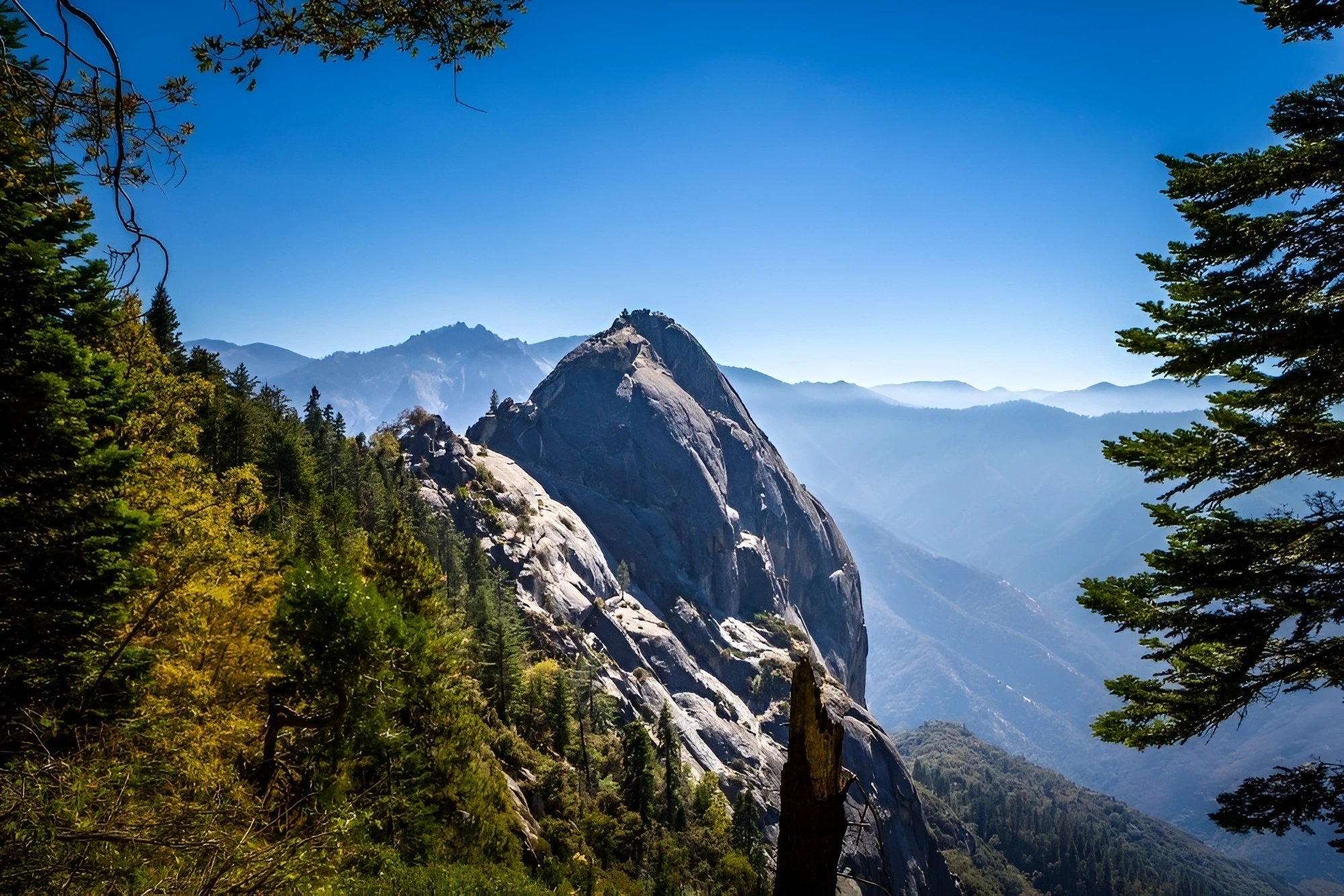
In 1931, the Civilian Conservation Corps carved a quarter-mile stone and concrete stairway—about 350 steps—directly into the rock. The trail is narrow and steep, hugging the cliffside with railings at various points, culminating in a summit that provides breathtaking 360-degree views. I’ll admit, I have a fear of heights—and the idea of clinging to sheer granite walls didn’t thrill me.
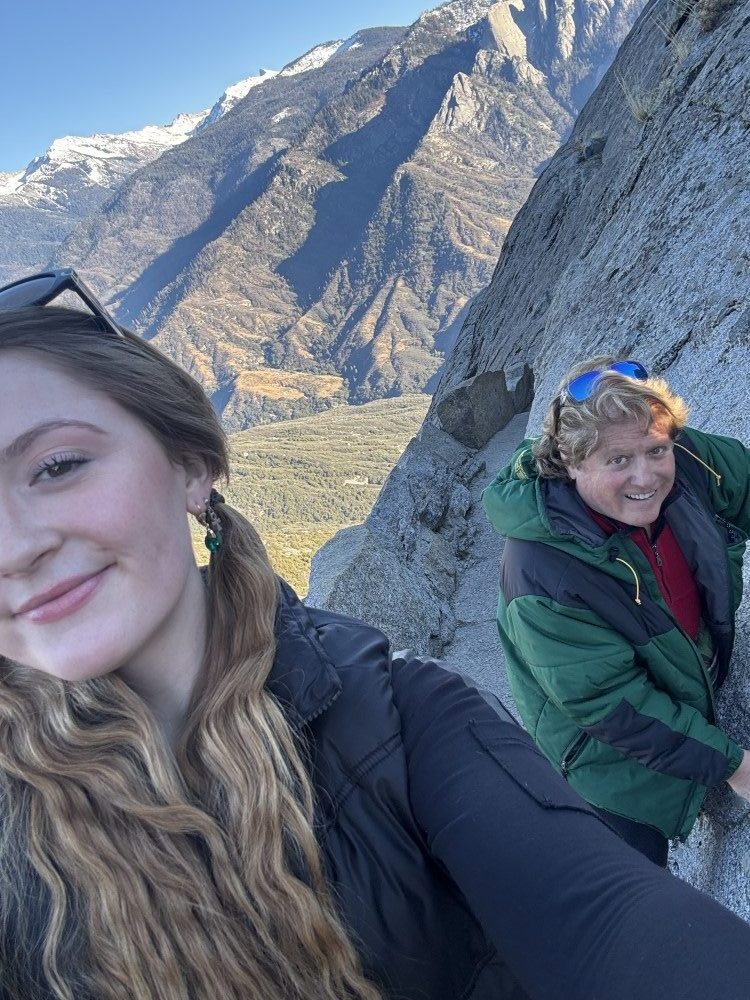
The lower stairs felt safe at first, but don’t let that comfort fool you—it gets much riskier as you approach the top. At one point, I glanced over my shoulder and realized I was standing just feet away from a 1,000-foot vertical drop.
This climb is short but strenuous and not recommended during thunderstorms, icy weather, or for those uncomfortable with heights. There are no elevators or alternate accessible routes.
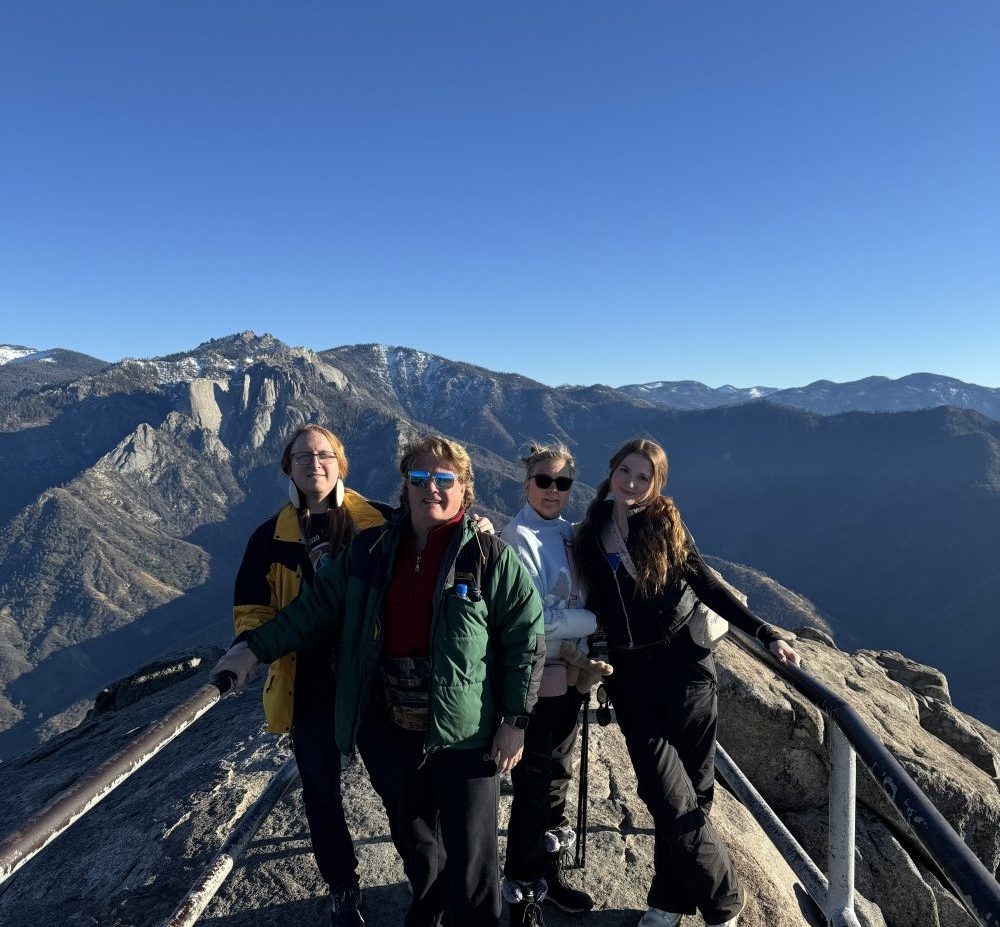
Many sections are narrow, though the summit has sturdy railings. When we visited, the road to Moro Rock was closed to traffic (it’s typically open during the warmer months). Some people time their climb with sunset. If you plan to do that, I strongly recommend bringing headlamps and warm clothing, as descending this rugged granite face in the dark requires solid footing and balance.
As our adventure came to a close, we felt both physically spent and deeply fulfilled. From the icy majesty of Yosemite’s cliffs to the towering serenity of Sequoia’s ancient groves, each stop along the way reminded us of nature’s unmatched power to inspire, humble, and reconnect us. These trails challenged us, the views left us speechless, and the memories will stay rooted in our hearts like the great sequoias themselves: timeless and enduring.

 Mariposa Trail
Mariposa Trail